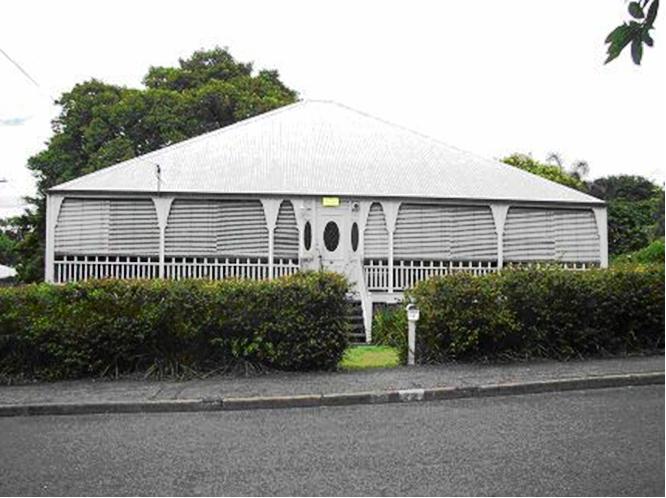Addresses
Type of place
House
Period
Federation 1890-1914
Style
Bungalow
Addresses
Type of place
House
Period
Federation 1890-1914
Style
Bungalow
This federation era Bungalow style house was built in 1913 for Frederick Rollwagen and was part of the original Killarney Estate in Yeronga. Rollwagen appears to have lived in the house until around 1921 before renting it out to various tenants throughout the 1920s and 30s. Rollwagen eventually sold the house in 1943 and it has since had a number of different owners.
Also known as
Rollwagen Residence
Lot plan
Key dates
Local Heritage Place Since —
Construction
Roof: Corrugated iron;Walls: Timber
Criterion for listing
(A) Historical; (E) AestheticInteractive mapping
Also known as
Rollwagen Residence
Lot plan
Key dates
Local Heritage Place Since —
Construction
Roof: Corrugated iron;Walls: Timber
Criterion for listing
(A) Historical; (E) AestheticInteractive mapping
History
This Federation-era dwelling was built about 1913 for Frederick Rollwagen who possibly occupied it until 1921.
This large dwelling set in a spacious garden reflects the prestigious residential development of Yeronga following the opening of the South Brisbane rail line to Corinda in 1884 and Yeronga Railway Station in 1885.
As early as 1906 Yeronga was attracting fulsome praise as potentially ‘one of the best residential areas in Southern Queensland’ with ‘delightful residential nooks’ and houses.
The land on which the house was built was originally part of the Killarney Estate, portion 149 in the parish of Yeerongpilly, County of Stanley.
By 27 January 1864 portion 149 was advertised in the Brisbane Courier as ‘the Village of Killarney’, with a subsequent auction sale notice appearing on 28 January 1864.
Portion 149 was bounded by Park Road and Yeronga Park along the eastern side, the railway line to the west, Killarney Street and portion 148 along the southern side and undivided Portion 150 at the northern end.
The name ‘Killarney Estate’ was used in the 1880s building boom years to designate a single portion of land – about 3.6 hectares – which was offered for auction in subdivided lots.
Patrick Crowe, who owned much of Killarney Estate, had established himself as a land and mining agent in Brisbane in the 1880s. He was a director of several mining companies and connected with various syndicates. Also a commission and land agent, Crowe was involved in speculation. He was to get into financial difficulty by the 1900s when the mortgagee transferred his remaining Killarney property.
During the 1920s ownership of the property remained in the Rollwagen name but the house was occupied by Thomas Hopkins, Eric Scriven, a prominent local identity, and Frederick Clifton. William D M Johnson subsequently occupied the house from the 1930s.
The Johnson family moved from 15 Killarney Street on the opposite side of the road. Ted Johnson eventually bought the house from the Rollwagens in 1943 for his father William Johnson who had been forced into early retirement.
The house continued to remain in the Johnson family, being occupied by various member of the family since World War II.
Description
This Federation era bungalow is a very good example of this style with its continuous roof to the verandah edge.
Federation era features include the brackets and balustrades. There are step in windows and french doors on the side of the house that has encircling timber verandahs.
The leadlight front door is not the original door. This was blown off in the 1973 tornado which swept through the area, step-in windows and french doors on the side.
Statement of significance
Relevant assessment criteria
This is a place of local heritage significance and meets one or more of the local heritage criteria under the Heritage planning scheme policy of the Brisbane City Plan 2014. It is significant because:
References
-
Brisbane City Council, Properties on the Web, website
-
Department of Natural Resources, Queensland Certificate of Title records
-
Applied History Centre, Department of History, Character Study of Killarney Estate, Yeronga, December 1994
-
Yeronga Heritage Survey
Citation prepared by — Brisbane City Council (page revised September 2020)

